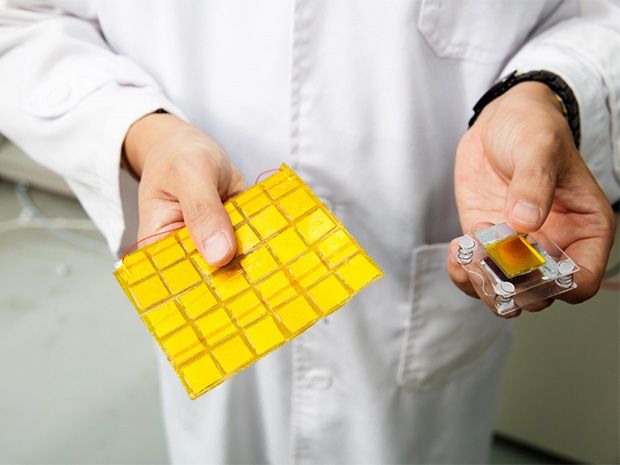Nanogenerators Could Charge Your Smartphone
A new polymer provides a 20-fold increase in the power output of nanogenerators
Researchers at the Georgia Institute of Technology have been exploring the applications and commercial potential for triboelectric nanogenerators (TENGs) since 2012. These so-called TENGs essentially harvest static electricity from friction.
Now a team of researchers at Ulsan National Institute of Science and Technology (UNIST) in South Korea have overcome one of the hurdles preventing the technology from gaining wider adoption: low power output. To do this, they have developed a new polymer that serves as a dielectric material.
Dielectrics are electrical insulators that become polarized when an electrical field is applied to them. The polarization and depolarization that occurs in dielectrics when in the presence of an external electrical field have made them attractive candidates for the charge and discharge of electricity.
The TENG devices themselves consist of two different materials that are rubbed together. In this way, materials that tend to give off electrons, such as glass or nylon, will donate them to materials that tend to absorb them, such as silicon or teflon. By converting mechanical energy from friction to electricity, the TENGs can power small electronic devices.
The UNIST researchers studied TENG devices and found that despite their useful properties, their friction-based operation has several drawbacks. Among them are a lack of uniform contact, material loss through wear, high sensitivity to humidity, and large deviation in output power. The Korean team focused initially on improving the output power, but in the process they may have solved some of the environmental issues associated with TENGs.
Their device, described in the journal Science Advances, is similar to the ones developed at Georgia Tech. However, the UNIST researchers developed a new dielectric polymer material that can accept more charges from an electrode and increase the power output.
“To enhance the output power, we are trying to develop new polymers as effective dielectrics and new device structures with low charge loss inside,” said Jeong Min Baik, a researcher at UNIST and coauthor of the paper, in an email interview with IEEE Spectrum. “As a material scientist, I think that it is important to synthesize the best polymers as effective dielectrics.”
These new polymers had nearly twice the dielectric constant—the measure of a material’s ability to store energy in the presence of an electric field—of the previous materials used. This increase in the dielectric constant also doubled the density of the charges compared to other nanogenerators. In addition, when the researchers aligned the dipole direction of the film, it improved the material’s charge-accepting characteristics, resulting in a 20-fold increase in output power.
Baik and his colleagues believe that this improved power output could make TENGs well suited to some attractive charging applications.
“The ultimate goal of my work is charging the battery of a smart watch or phone. I think that it is realistic; however, not now,” said Baik. “One of the fastest targets will be self-powered physical sensors based on triboelectrics or tribotronics. After some issues such as stability [are overcome], a product will be shown.”
Baik’s next step is to prove that it is possible to achieve “1 percent charging” of a smart watch from the enhanced-polymer TENGs. “For this, I will design new dielectric layers and synthesize the polymer materials,” he adds.
Dexter Johnson is a contributing editor at IEEE Spectrum, with a focus on nanotechnology.
